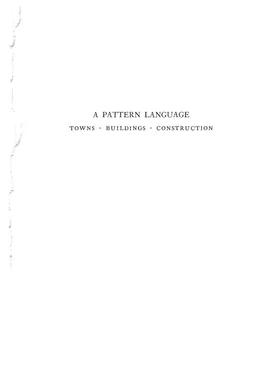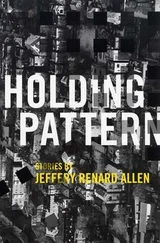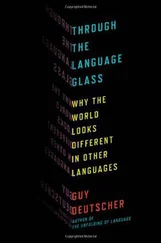Christopher alexander - A pattern language
Здесь есть возможность читать онлайн «Christopher alexander - A pattern language» весь текст электронной книги совершенно бесплатно (целиком полную версию без сокращений). В некоторых случаях можно слушать аудио, скачать через торрент в формате fb2 и присутствует краткое содержание. Жанр: Прочая научная литература, на английском языке. Описание произведения, (предисловие) а так же отзывы посетителей доступны на портале библиотеки ЛибКат.
- Название:A pattern language
- Автор:
- Жанр:
- Год:неизвестен
- ISBN:нет данных
- Рейтинг книги:3 / 5. Голосов: 1
-
Избранное:Добавить в избранное
- Отзывы:
-
Ваша оценка:
- 60
- 1
- 2
- 3
- 4
- 5
A pattern language: краткое содержание, описание и аннотация
Предлагаем к чтению аннотацию, описание, краткое содержание или предисловие (зависит от того, что написал сам автор книги «A pattern language»). Если вы не нашли необходимую информацию о книге — напишите в комментариях, мы постараемся отыскать её.
A pattern language — читать онлайн бесплатно полную книгу (весь текст) целиком
Ниже представлен текст книги, разбитый по страницам. Система сохранения места последней прочитанной страницы, позволяет с удобством читать онлайн бесплатно книгу «A pattern language», без необходимости каждый раз заново искать на чём Вы остановились. Поставьте закладку, и сможете в любой момент перейти на страницу, на которой закончили чтение.
Интервал:
Закладка:
A Pattern Language is the second in a series of books which describe an entirely new attitude to architecture and planning. The books are intended to provide a complete working alternative to our present ideas about architecture, building, and planning—an alternative which will, we hope, gradually replace current ideas and practices.
volume I THE TIMELESS WAY OF BUILDING volume 2 A PATTERN LANGUAGE volume 3 the Oregon experiment
Center for Environmental Structure
BERKELEY, CALIFORNIA
A
PATTERN
LANGUAGE
TOWNS • BUILDINGS • CONSTRUCTION
Christopher Alexander Sara Ishikawa Murray Silverstein
with
Max Jacobson Ingrid Fiksdahl-King Shlomo Angel
NEW YORK
OXFORD UNIVERSITY PRESS
1977
Copyright® 1977 by Christopher Alexander Library of Congress Catalogue Card Number: 74-22874 ISBN-13 978-0-19-501919-3
printing, last digit: 40 39 38 37 36 35 34
Printed in the United States of America on acid-free paper
CONTENTS
USING THIS BOOK
A ;pattern language ix Summary of the language xviii Choosing a language for your project xxxv The poetry of the language xl
TOWNS
Using the language 3 Patterns 10-457
BUILDINGS
Using the language 463 Patterns 467-931
CONSTRUCTION
Using the language 935 Patterns 9 3 9—116 6
❖
ACKNOWLEDGMENTS 1167
USING THIS BOOK
A PATTERN LANGUAGE
Volume i, The Timeless Way of Building , and Volume 2, A Pattern Language , are two halves of a single work. This book provides a language, for building and planning j the other book provides the theory and instructions for the use of the language. This book describes the detailed patterns for towns and neighborhoods, houses, gardens, and rooms. The other book explains the discipline which makes it possible to use these patterns to create a building or a town. This book is the sourcebook of the timeless way- the other is its practice and its origin.
The two books have evolved very much in parallel. They have been growing over the last eight years, as we have worked on the one hand to understand the nature of the building process, and on the other hand to construct an actual, possible pattern language. We have been forced by practical considerations, to publish these two books under separate covers 3 but in fact, they form an indivisible whole. It is possible to read them separately. But to gain the insight which we have tried to communicate in them, it is essential that you read them both.
The Timeless Way of Building describes the fundamental nature of the task of making towns and buildings.
A PATTERN LANGUAGE
It is shown there, that towns and buildings will not be able to become alive, unless they are made by all the people in society, and unless these people share a common pattern language, within which to make these buildings, and unless this common pattern language is alive itself.
In this book, we present one possible pattern language, of the kind called for in The Timeless Way. This language is extremely practical. It is a language that we have distilled from our own building and planning efforts over the last eight years. You can use it to work with your neighbors, to improve your town and neighborhood. You can use it to design a house for yourself, with your family; or to work with other people to design an office or a workshop or a public building like a school. And you can use it to guide you in the actual process of construction.
The elements of this language are entities called patterns. Each pattern describes a problem which occurs over and over again in our environment, and then describes the core of the solution to that problem, in such a way that you can use this solution a million times over, without ever doing it the same way twice.
For convenience and clarity, each pattern has the same format. First, there is a picture, which shows an archetypal example of that pattern. Second, after the picture, each pattern has an introductory paragraph, which sets the context for the pattern, by explaining how it helps to complete certain larger patterns. Then there are three diamonds to mark the beginning of the problem. After the diamonds there is a headline, in bold type. This
TOWNS
this book. We could not have made this book together, in the communal way we have done, without these machines: and we consider them a vital part of the new decentralized society we seek.
 |
| A small factory in Zetnun, Yugoslavia ; the work group is building a corn picking machine , an item they themselves decided to produce and sell in the marketplace. |
Therefore:
Use zoning laws, neighborhood planning, tax incentives, and any other means available to scatter workplaces throughout the city. Prohibit large concentrations of work, without family life around them. Prohibit large concentrations of family life, without workplaces around them.

decentralized production
 |
| ° o° ® |
 |
| o small work groups |
. . . the principles of structure allow you to imagine a building in which materials are distributed in the most efficient way, congruent with the social spaces given by the plan—structure FOLLOWS SOCIAL SPACES (2 O5 ),EFFICIENT STRUCTURE (206 ).But of course the structural conception is still only schematic. It can only become firm and cogent in your mind when you know what materials the building will be made of. This pattern helps you settle on materials.
*!•
There is a fundamental conflict in the nature of materials for building in industrial society.
On the one hand, an organic building requires materials which consist of hundreds of small pieces, put together, each one of them hand cut, each one shaped to be unique according to its position. On the other hand, the high cost of labor, and the ease of mass production, tend to create materials which are large, identical, not cuttable or modifiable, and not adaptable to idiosyn-cracies of plan. These “modern” materials tend to destroy the organic quality of natural buildings and, indeed, to make it impossible. In addition, modern materials tend to be flimsy and hard to maintain—so that buildings deteriorate more rapidly than in a pre-industrial society where a building can be maintained and improved for hundreds of years by patient attention.
The central problem of materials, then, is to find a collection of materials which are small in scale, easy to cut on site, easy to work on site without the aid of huge and expensive machinery, easy to vary and adapt, heavy enough to be solid, longlasting or easy to maintain, and yet easy to build, not needing specialized labor, not expensive in labor, and universally obtainable and cheap.
Читать дальшеИнтервал:
Закладка:
Похожие книги на «A pattern language»
Представляем Вашему вниманию похожие книги на «A pattern language» списком для выбора. Мы отобрали схожую по названию и смыслу литературу в надежде предоставить читателям больше вариантов отыскать новые, интересные, ещё непрочитанные произведения.
Обсуждение, отзывы о книге «A pattern language» и просто собственные мнения читателей. Оставьте ваши комментарии, напишите, что Вы думаете о произведении, его смысле или главных героях. Укажите что конкретно понравилось, а что нет, и почему Вы так считаете.












